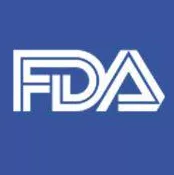FDA Finds Positive and Negative Trends in Antimicrobial Resistance in Bacteria
The U.S. Food and Drug Administration (FDA) has released its National Antimicrobial Resistance Monitoring System (NARMS) 2011 Executive Report, showing both increasing and decreasing antimicrobial resistance trends. NARMS was established in 1996 as a partnership between the FDA, the U.S. Centers for Disease Control and Prevention and the U.S. Department of Agriculture to track antibiotic resistance in foodborne bacteria. The Executive Report summarizes data previously released by each of the three agencies.
The annual NARMS Executive Report focuses on resistance to antibiotics that are considered important in human medicine as well as multidrug resistance (described as resistance to three or more classes of antibiotics). Under the NARMS program, samples are collected from human, food producing animals and retail meat sources, and tested for certain bacteria, specifically nontyphoidal Salmonella, Campylobacter and Enterococcus, to determine whether such bacteria are resistant to various antibiotics used in human and veterinary medicine. The report also includes data on Escherichia coli found in retail meats and chickens.
NARMS is critically important for monitoring trends in antimicrobial resistance among foodborne bacteria collected from humans, retail meats, and food animals. In particular, it assists FDA in making data-driven decisions on the approval of safe and effective antimicrobial drugs for animals.
Key findings from the NARMS 2011 Executive Report include:
- Eighty-five percent of non-typhoidal Salmonella collected from humans had no resistance to any of the antibiotics tested.
- In people, the five-drug resistance pattern “ACSSuT” (resistance to ampicillin, chloramphenicol, streptomycin, sulfonamide, and tetracycline) in Salmonella Typhimurium has declined to 19.5% in 2011 from its peak in 1997 at 35.1%.
- During its 16-year history, NARMS has found Salmonella resistance to ciprofloxacin, one of the most common antibiotics to treat Salmonella infections in humans, to be very low (less than 0.5% in humans, less than 3% in retail meat, and less than 1% in animals at slaughter).
- Multi-drug resistance in Salmonella from humans, slaughtered chickens and slaughtered swine was the lowest since NARMS testing began. However, multi-drug resistance in Salmonella from retail poultry meats generally increased, with slight fluctuations.
- Erythromycin resistance in Campylobacter jejuni has remained at less than 4% in isolates obtained from humans, retail chicken and slaughtered chicken since testing began. The antibiotic erythromycin is the drug of choice for treating Campylobacter infections, more than 90% of which are caused by C. jejuni.
- Campylobacter resistance to the fluoroquinolone ciprofloxacin has increased slightly in isolates from humans since 2005. Ciprofloxacin is not approved for use in poultry, and FDA withdrew approval for the use of enrofloxacin in poultry in 2005. Ciprofloxacin and enrofloxacin are both in the same class of drugs (fluoroquinolone).
- Resistance to third- generation cephalosporins, another important drug class for the treatment of Salmonella infections, rose among isolates from retail ground turkey between 2008 and 2011 and among certain Salmonella serotypes in cattle between 2009 and 2011. In April 2012, FDA prohibited certain uses of cephalosporin drugs in cattle, swine, chickens and turkeys. NARMS will continue to monitor these trends over time.
While some encouraging trends were observed, these findings underscore the need for continued efforts to curb antimicrobial resistance. Monitoring antimicrobial resistance through NARMS is an important component of the overall effort to minimize antimicrobial resistance and promote appropriate and judicious use of antimicrobial drugs in both humans and animals.
Looking for quick answers on food safety topics?
Try Ask FSM, our new smart AI search tool.
Ask FSM →








